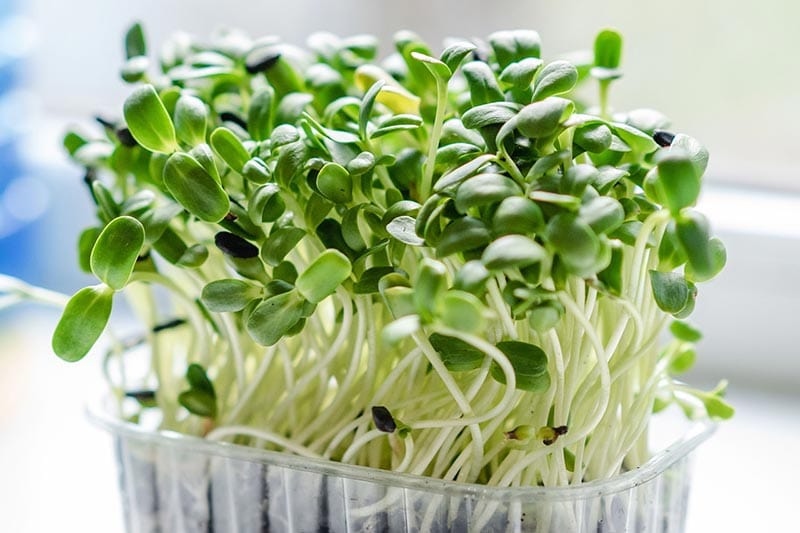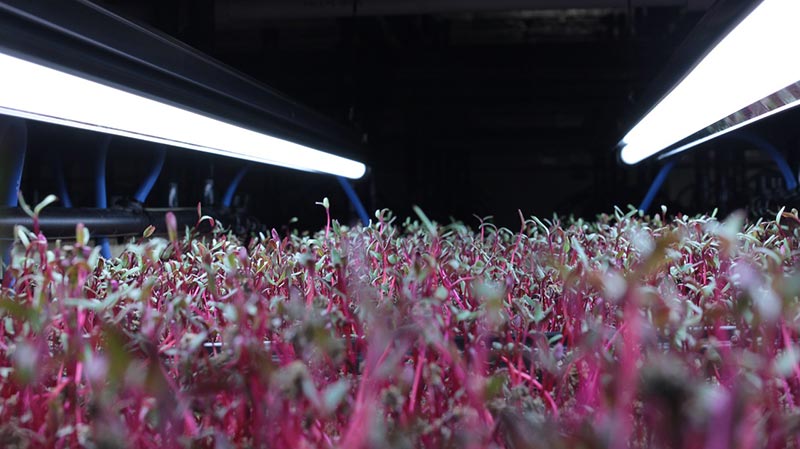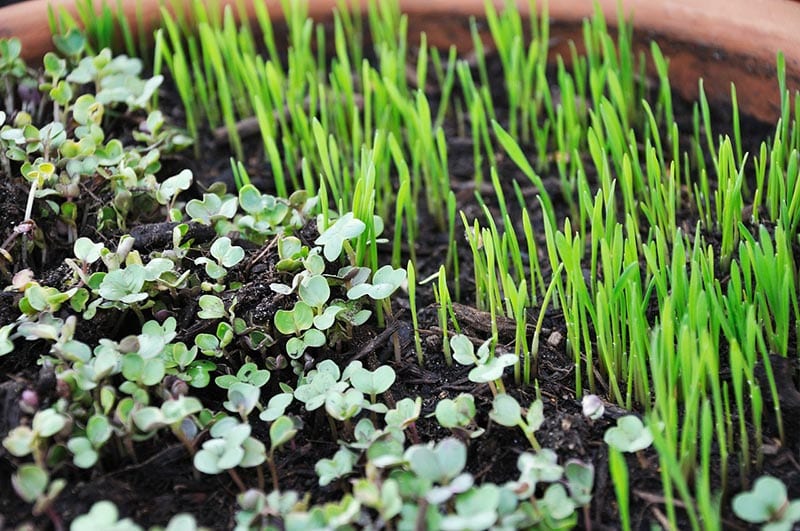What Exactly Are Microgreens (and Why Grow Them?)
-
Codee Chessher
- Last updated:

Whether at the grocery store shopping the wildly inflated prices or at a fine restaurant, most people have seen microgreens. However, most people probably are not familiar with why they’re used, why you would grow them, and other key information. For example, what are microgreens? Technically, microgreens are the edible seedlings of vegetables and herbs. They’re usually grown in trays or growing mats, and unlike veggies, they have to be replanted after every harvest.
Microgreens come in many forms. A few that you are probably familiar with include arugula, basil, mustard greens, parsley, and cilantro. Microgreens were first grown for specialty dishes during the 1980s, and there were less than a dozen available. Today, there are over 80 types of microgreens.
Why Should I Grow Microgreens?
It can be easy to think of microgreens as just garnish, but they’re more complex than that. If you’re lacking a certain something in your food, you might want to consider growing microgreens yourself. The main reasons you might want to grow them are because of their nutritional value, taste, and little effort to grow them. Let’s delve into those topics a bit more below.

Nutritional Value
Microgreens are densely packed with essential vitamins and nutrients. The exact content varies by plant, but microgreens have several times the vitamin C, K, E, lutein, and beta-carotene than mature leaves from the same plant. This makes them a great addition to nearly any meal, although their diminutive size makes them a poor alternative to veggies and other foods.
Taste
You might have noticed that microgreens have a shockingly intense taste when added to dishes. Purple radish greens, for instance, add a spicy radish burst. Generally, microgreens have a more focused version of the adult plant’s flavor. Combined with their texture, microgreens can add a unique and essential twist to meals. Because they’re so expensive in grocery stores, growing them yourself is a cost-effective way to spice up your home-cooked food.
They’re Easy to Grow
Microgreens have their unique challenges, like needing to be replanted after each harvest, but they’re very easy to grow at home. They only require a growing medium with ample water and drainage. An average microgreen tray can easily fit on a sunny kitchen counter.
Notably, microgreens require much less water than their adult variants. Most microgreens are ready a week or so after planting, so you can keep a rotation of trays growing to have tasty and healthy microgreens year-round.

Are Microgreens Just a Fad?
Microgreens are relatively unimpressive, and it’s easy to think they’re just overpriced bits of garnish. However, microgreens are a sustainable way to add strong flavor and extra nutrients to food.
Why sustainable, you ask? Because in this age of water conservation, microgreens need far, far less water to grow than vegetables, and that will only become more important as droughts and water shortages intensify.
It’s true that microgreens became popular in trendy restaurants known for delicious food that isn’t very filling, but that’s a dishonest way to think of them. If you don’t want to use them in food, they’re also great for adding color and flavor to smoothies. Regardless of how you use them, microgreens are one of the most cost-effective ways to ramp up your nutritional intake and make some creative meals.
Drawbacks of Growing Microgreens
Microgreens are great, but they have issues that can make them frustrating to grow. Let’s check out what cons you need to be aware of before attempting to grow your own microgreens.
- They require particular setups. Microgreens need sunlight, water, and ample drainage. Using subpar growing trays can lead to poor results when you’re starting out and discourage you from continuing.
- They’re a single-use crop. Unlike other plants that grow back after harvest, microgreens have to be replanted if you want a continuous supply. Buying seeds over and over can get annoying, but it’s ultimately not that big a deal.
- Microgreens are vulnerable to disease. Even the smallest imbalances can infect a tray with rot or other diseases, and then the whole tray is a waste.
- They require daily attention. Unlike some plants that you check every couple of days, you have to check microgreens daily. They might need more water, higher humidity, more sunlight, or start to develop problems.

How to Get Started Growing Microgreens
First, you should select a single microgreen to start according to your climate. Pea shoots and radish shoots are great for cooler climates, while sunflower shoots are a great choice for warmer climates. Really, though, most microgreens do well in mildly warm climates, as long as you provide enough humidity and sunlight.
To set yourself up for success, it helps to have the right equipment before you plant microgreen seeds. The good news is that they are fairly easy to keep going once you start. Let’s check out a list of what you need to have to get started with microgreens.
- Seeds
- Growing mat/shallow planting tray with drainage holes or pie trays with holes poked on the bottom
- Microgreen soil mix
- Sunny window/sunny spot outside
- Spray bottle with water
- Humidifier (optional, but great for dry indoor areas)
If you have a growing mat, place that in a planting tray and fill the vessel with microgreen soil mix. Take a handful of seeds and scatter them around in the soil, then mix the soil around until the seeds are mixed in. You can’t go wrong with lots of seeds here. Next, scatter some soil over the top of the tray. It helps a lot to pat the top of the soil, which lightly packs the seeds into the soil.
Thoroughly water the soil and stop once the water starts to flow out of the drainage holes. You’ll want to maintain thoroughly moist soil at all times, but do not flood the soil. Microgreens are especially vulnerable to root rot and mold from stagnant water.
Until the seeds germinate, you’ll want to keep the tray covered in a dark place, like a cabinet. Once they’ve germinated, place your newly seeded tray in a sunny spot outside or inside. Sunny kitchen window sills are a great indoor spot because they tend to have higher humidity than the rest of the house.
Conclusion
Microgreens are a delicious way to add flavor to food without drastically changing the composition of a meal, and the best part is that they are pretty easy to grow yourself at home. They have their quirks, like needing daily attention and particular setups, but many consider microgreens to be an essential part of sustainable food moving into the future.
Featured Image Credit By: OleksandrPidvalnyi, Pixabay
Contents
